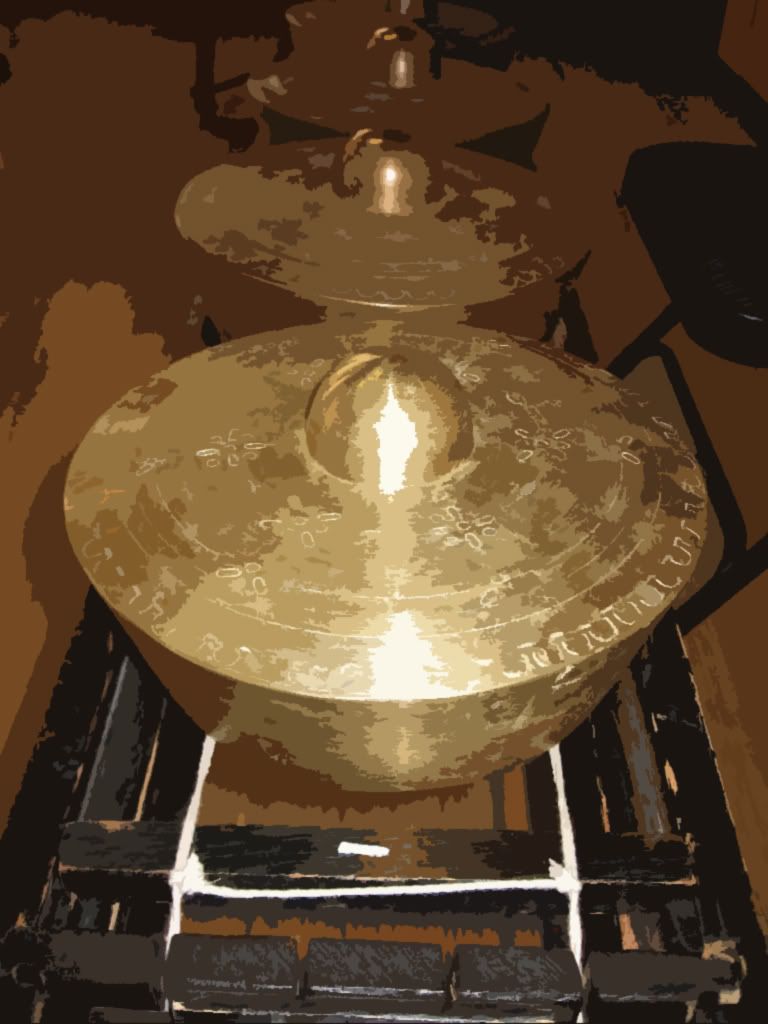
Kulintang is a musical instrument which is a set of eight bronze (or brass) gongs, graduated in size and in tuning, and suspended horizontally on a wooden stand. It’s a time immemorial practice by people in Mindanao particularly the Moros. Sagayan, Tidto, Tagungo and Binalig
A kulintang ensemble being used for purpose of entertainment.
Kulintang music generally could be found as the social entertainment at a host of different occasions. It is used during large feasts, festive/harvest gatherings, for entertainment of visiting friends and relatives, and at parades. Kulintang music also accompanies ceremonies marking significant life events, such as weddings and annual pilgrimages returning to and from Mecca.Kulintang music also plays a significant role during state functions, used during official celebrations, entertaining of foreign dignitaries and important visitors of distant lands, court ceremonies of either the sultanate or village chieftains, enthroning/coronations of a new leader and the transferral of a sultanate from one family to another.
Kulintang ensembles accompanying a healing ritual.
Kulintang music is prohibited from being played inside mosques and during Islamic rites/observances/holidays, such as the fasting month (Ramadhan), where playing is only allowed at night during the time when they are allowed to eat. They also prohibit it during the mourning period of the death of important person, during funerals, and during the peak times of the planting and harvest season
Kulintang music has uses other than public performances. It also is used to accompany healing ceremonies/rituals (pagipat)/animistic religious ceremonies. Though this practice has died out among the Maranao due to its non-Islamic nature, some areas in Mindanao, Sabah and Malaku still practice this ancient tradition.
Kulintang music can be used for communicating long distance messages from one village or longhouse to another. Called apad, these renditions could be used to mimic the Maguindanao language, creating a private language or a form of social commentary that only those who know the music would understand. However, apad is coming to disuse due to the fact, times are changing — apad with its once special meanings are no longer relevant in larger, mixed populations. Instead, anun, music without a message used to express one’s sentiments/feelings, has come more and more into use due to the fact it works well with the musical elaborations and idiosyncratic styles of the times.
Kulintang music was also crucial in relation to courtships due to the very nature of Islamic custom, which did not allow for unmarried men and women to intermingle. Traditionally, unmarried daughter were kept in a special chamber in the attic called a lamin, off-limit to visitors and suitors. It was only when she was allowed to play during kulintang performances were suitors allowed to examine her. It’s because of this kulintang music was traditionally seen as one of the rare socially approved vehicles for interaction among the sexes
Our performers of kulintangan called themselves “Maguindanaon Kulintangan Group” each one from the group started playing kulintang at a very young ages, they can perform almost all musics of kulintang like sinulog (exhibition), tidto that can be accompanied by sagayan commonly played in wedding and baptism, tangungo exclusive for healing rituals and the binalig, a kulintang with dances. They are Hadja Rahma Machmood, Hadja Sapia Lucas, Bai Dido Ayao, Hadja Salam and LucasNoroddin Lucas together with their dancer Bai Sirikit.
These people are internally displaced persons (IDP’s), their originally from Maguindanao but because of the continuous existence of war in Mindanao and poverty they decided to situate themselves here in Metro Manila particularly in the muslim village in Taguig City called Maharlika. The existence of kulintang symbolizes and speaks peace and serenity. But because of threat and existence of unpeace situation in areas in Mindanao, the people decided to keep their musical instrument and hold and take up arms to protect themselves. In this present situation, its not just the influence of the western culture that droves away the people to forget their cultures and traditions but instead its the situation that forces them to do so. How do you think could you still play the instrument where any moment there’s danger? Bombs may fall.




Thank you for the information
ReplyDeleteStrategic Band Consultant